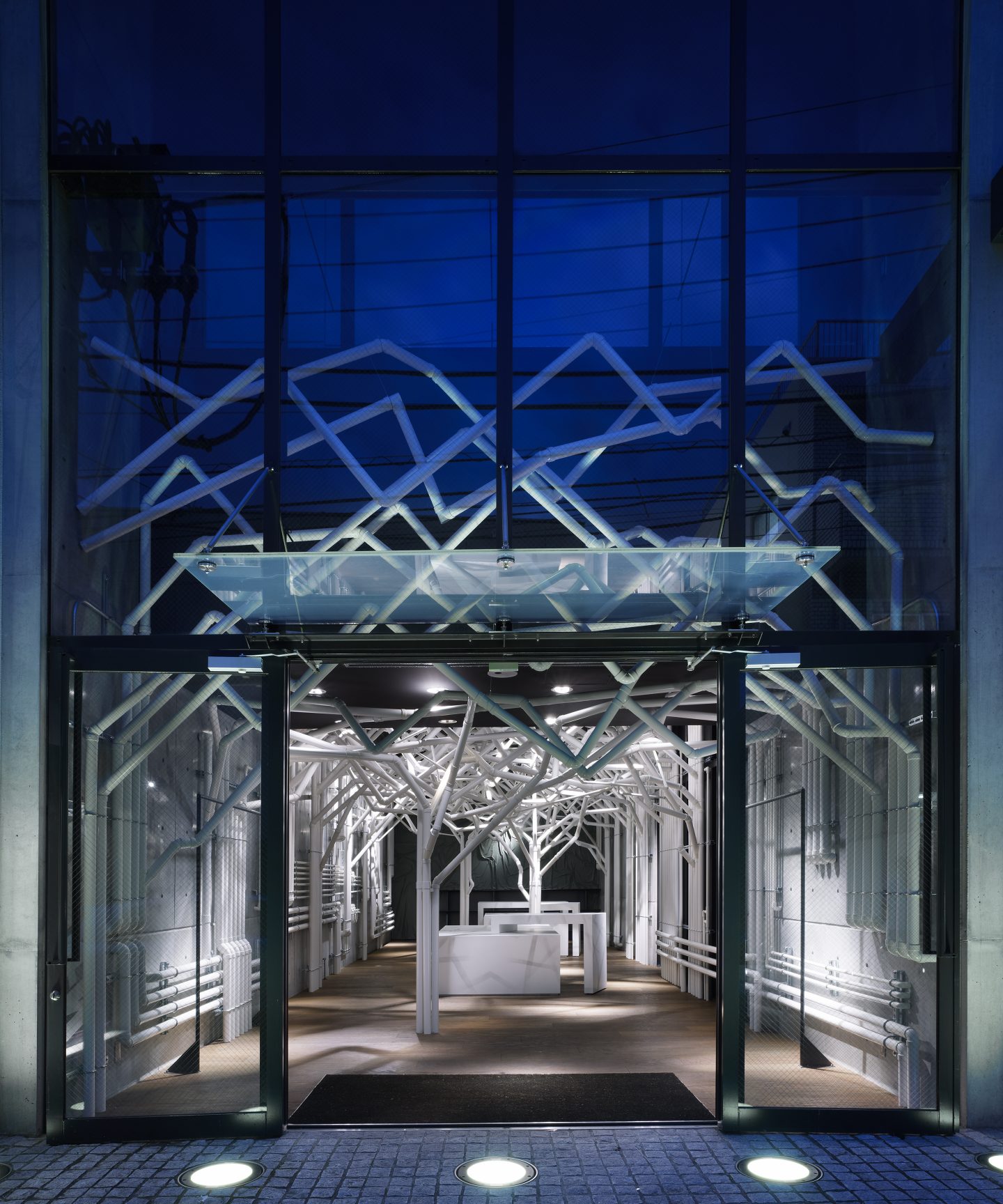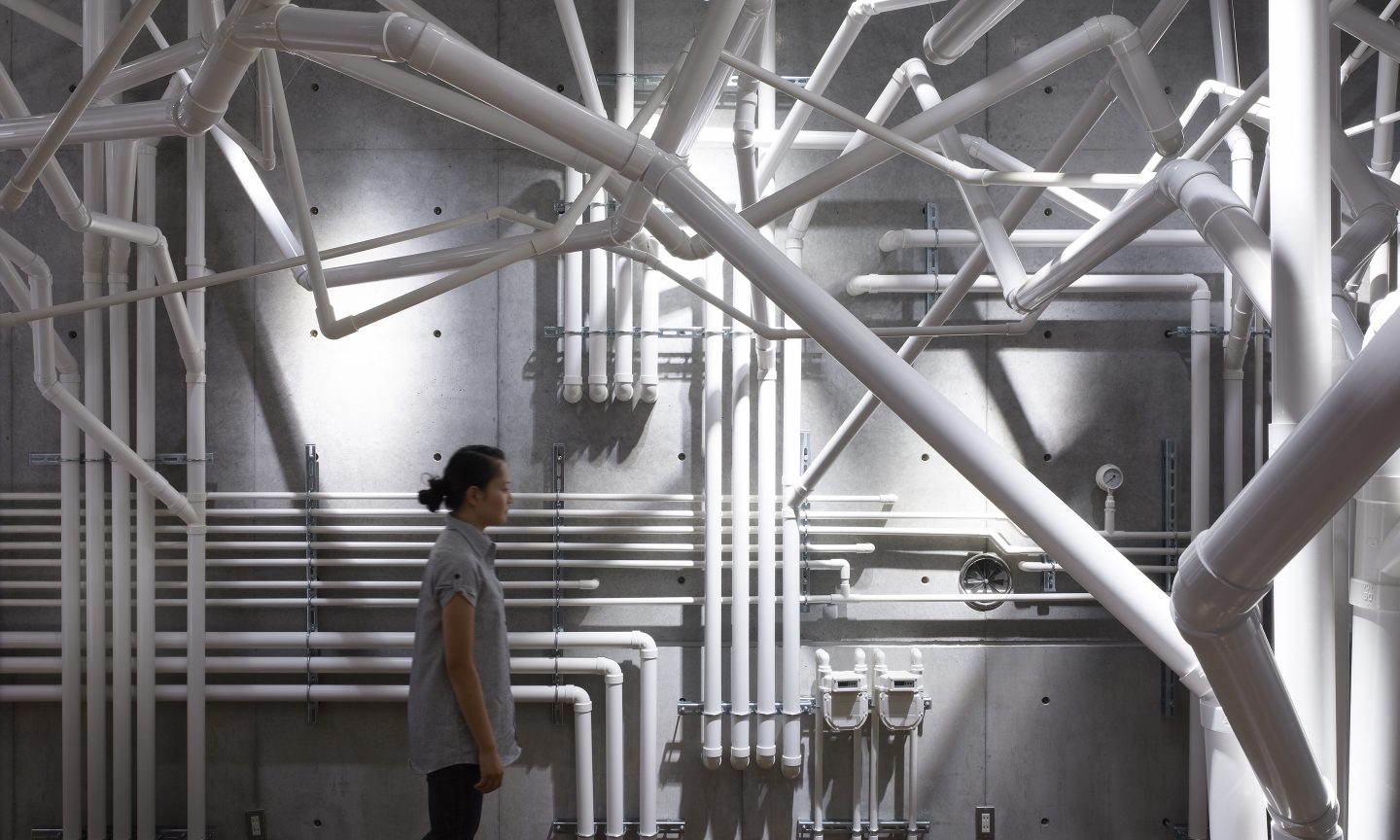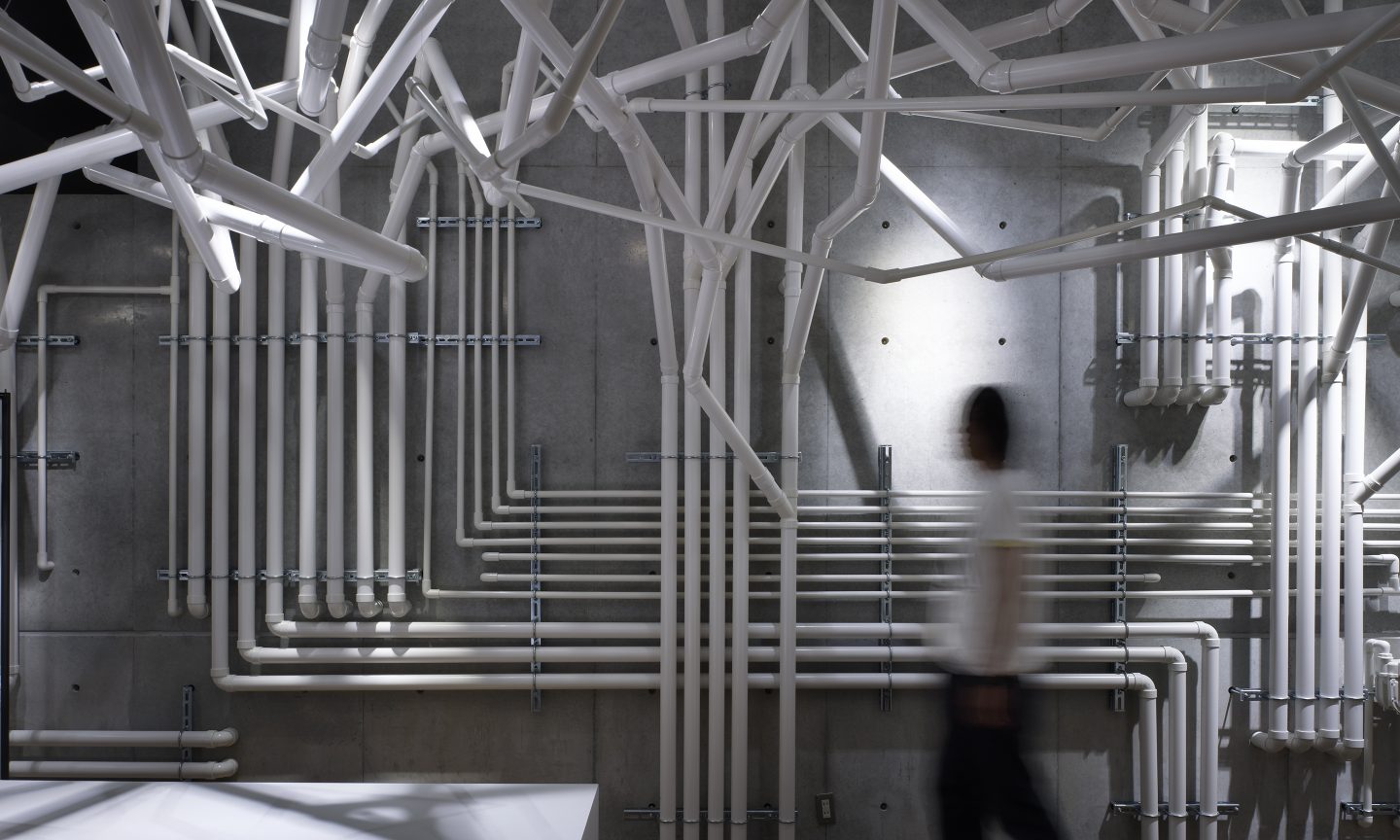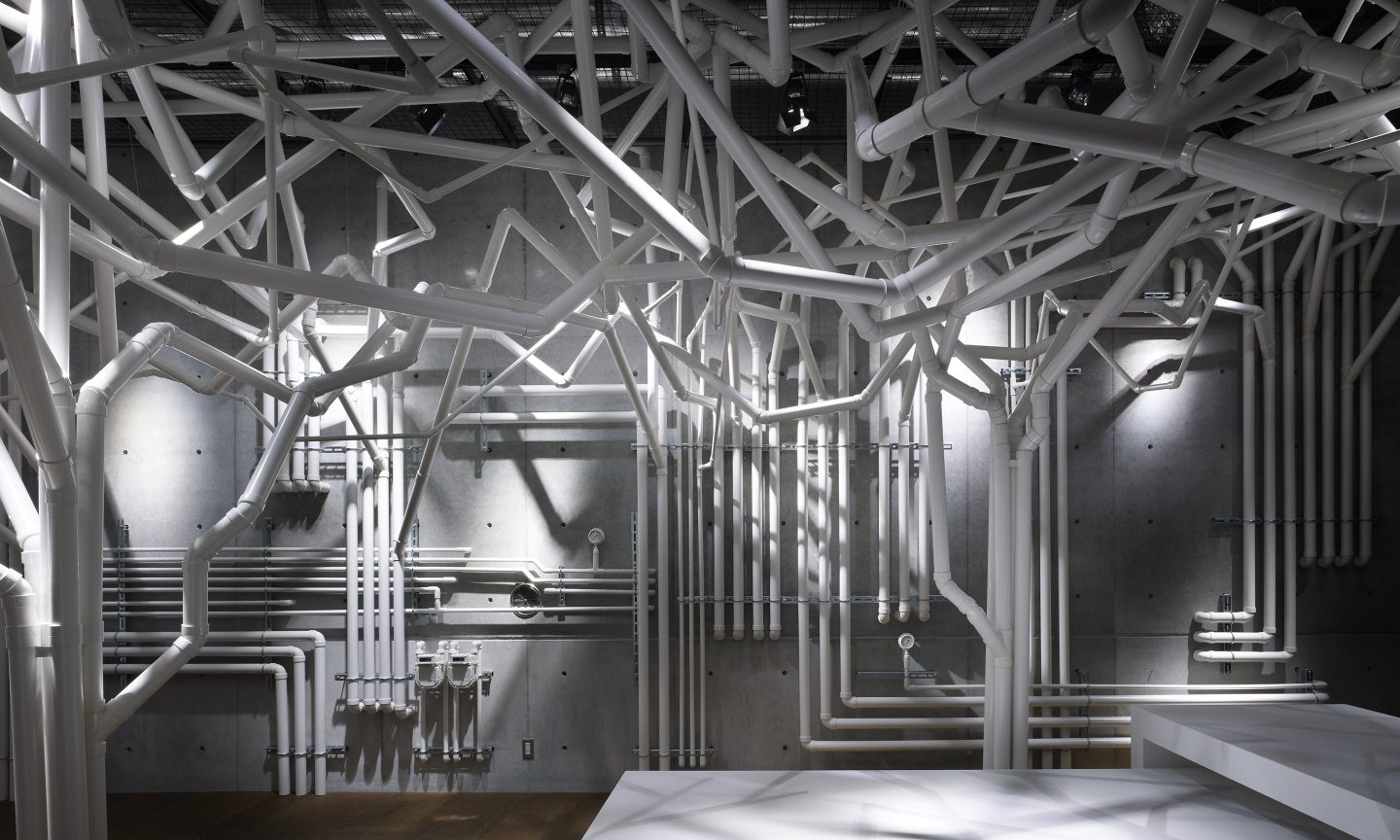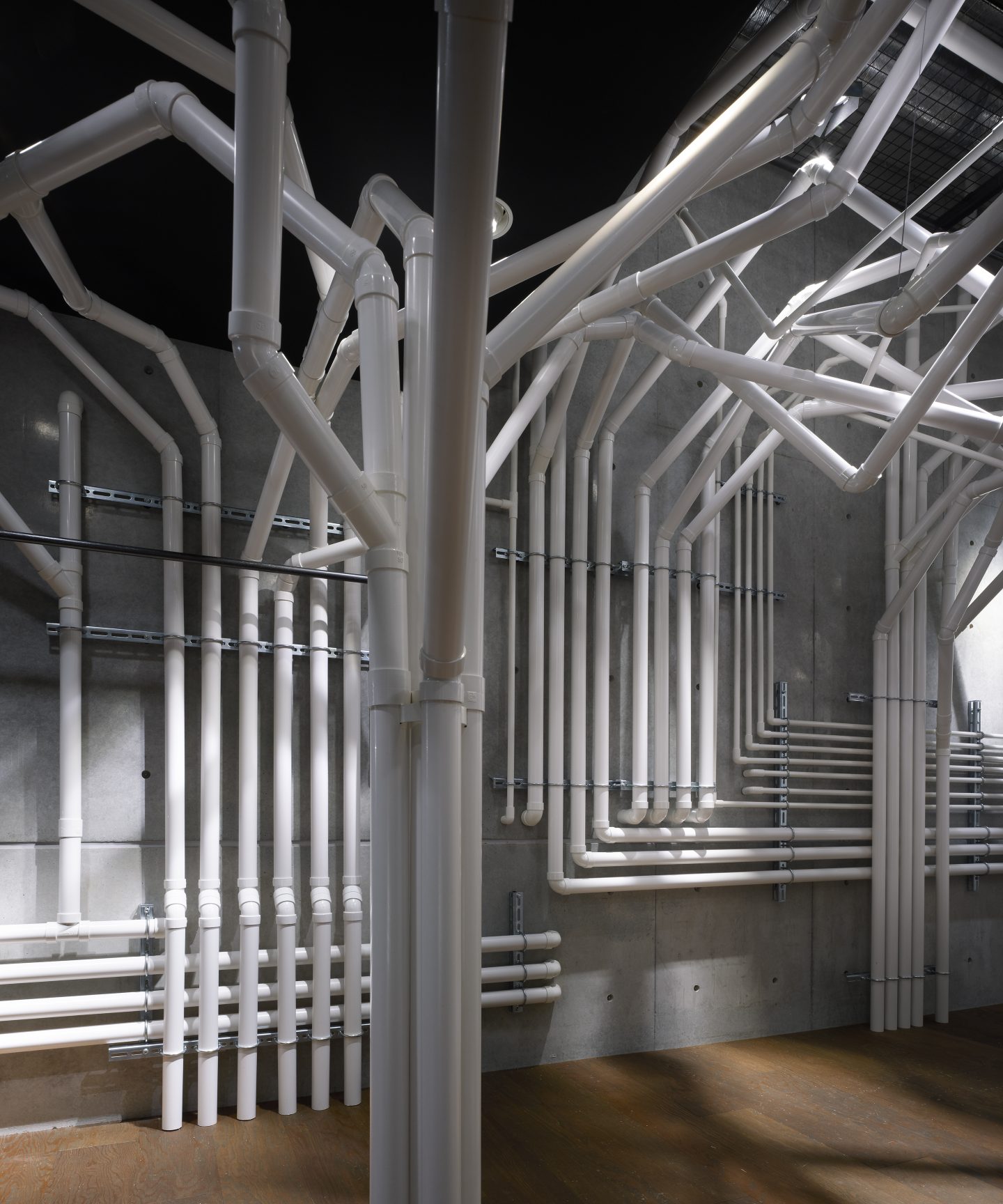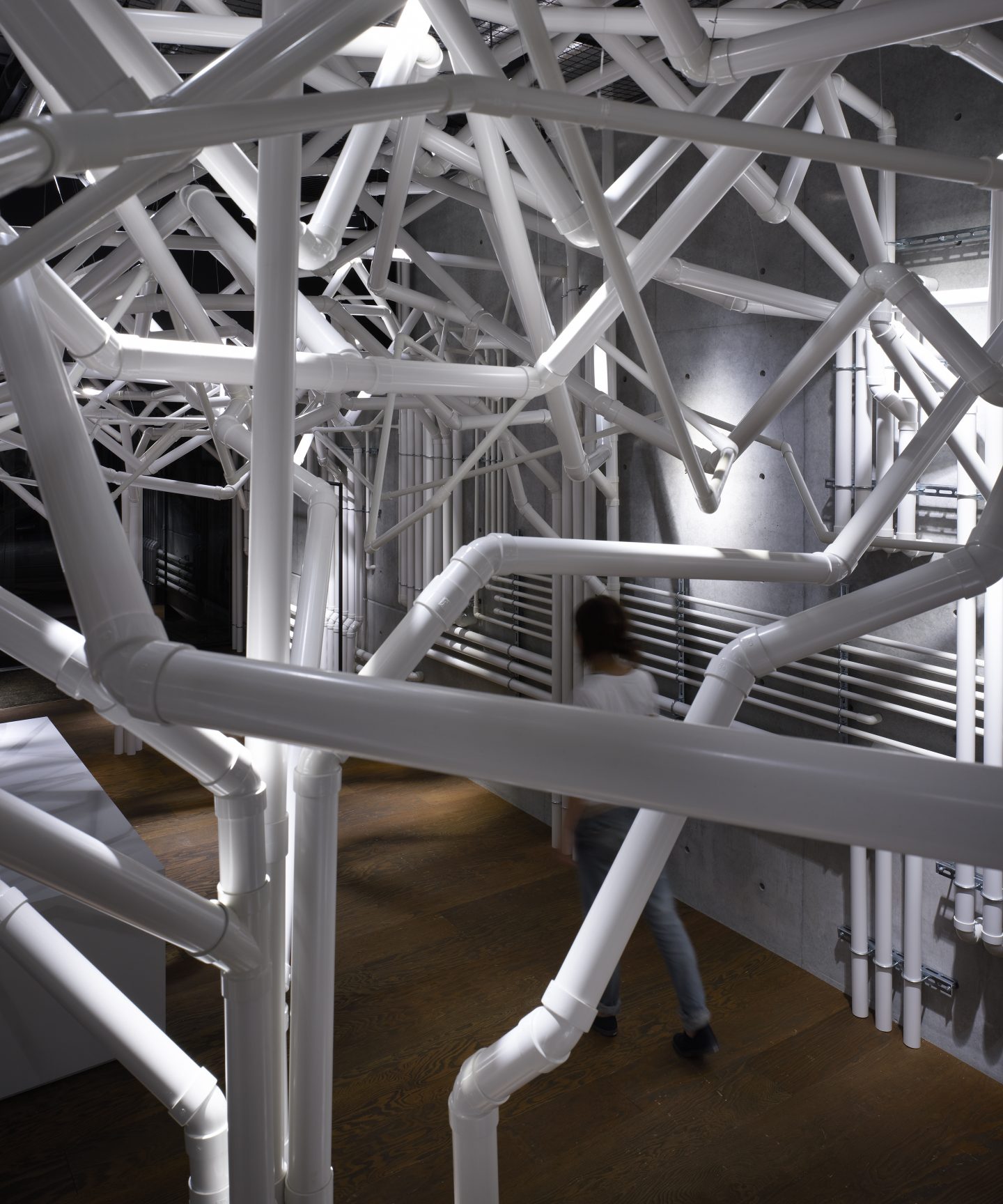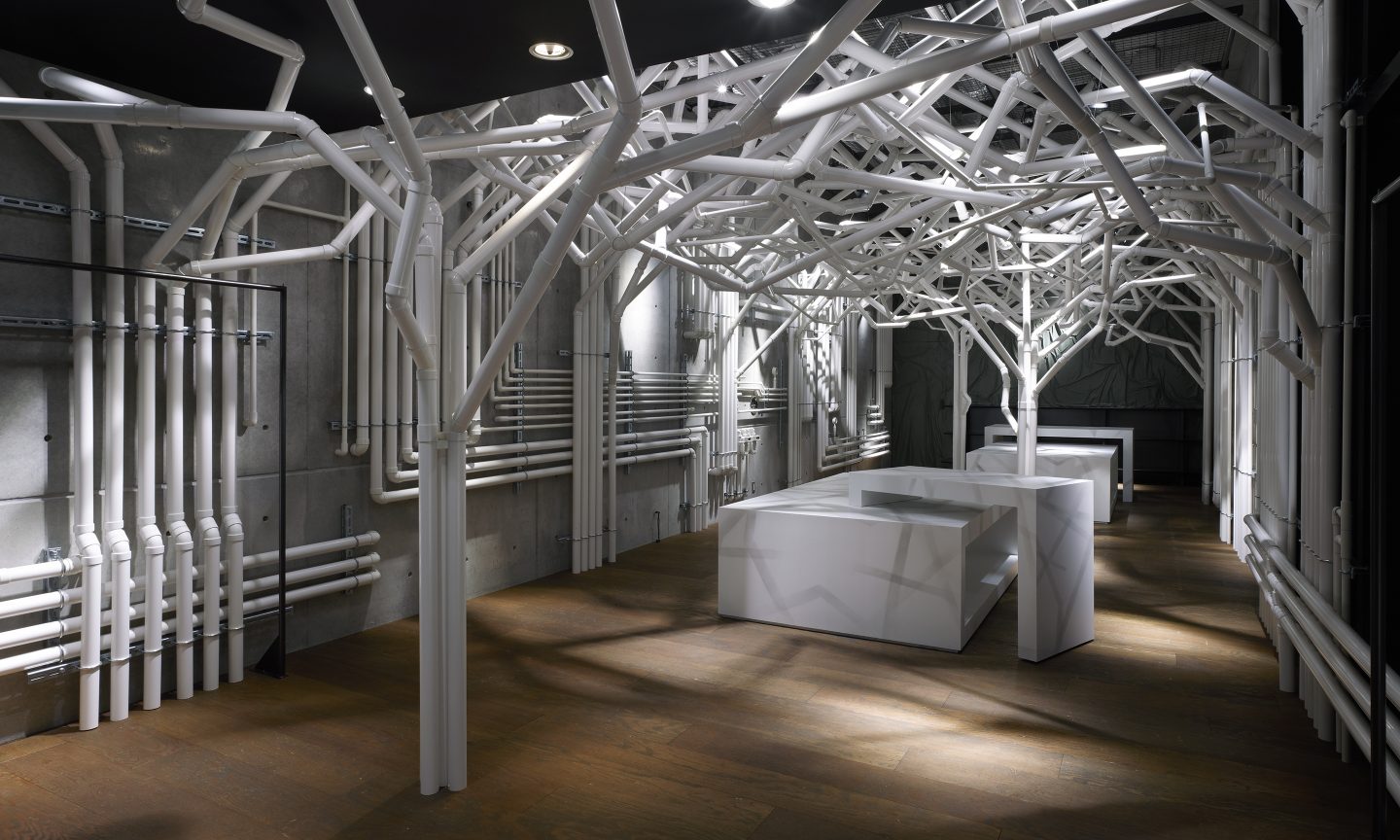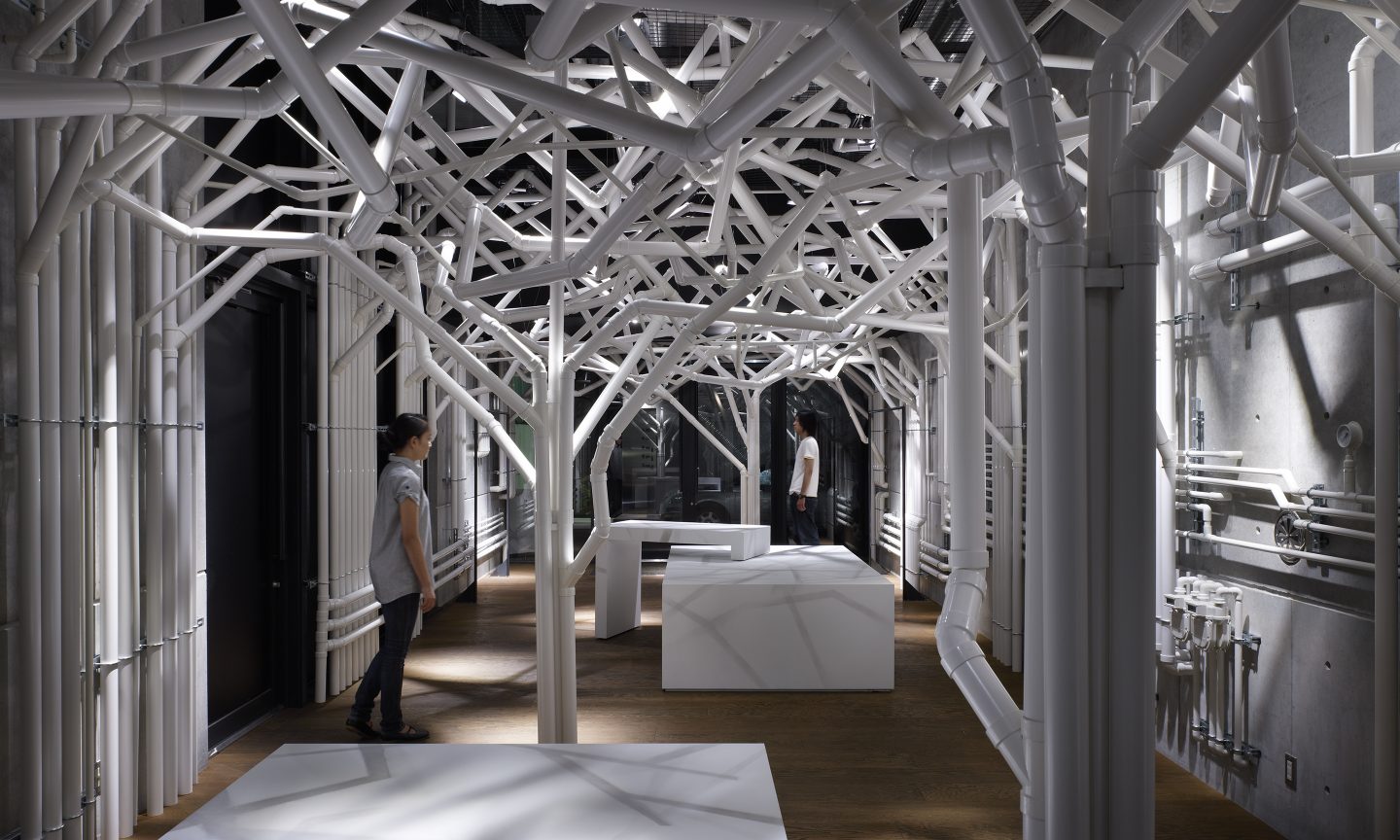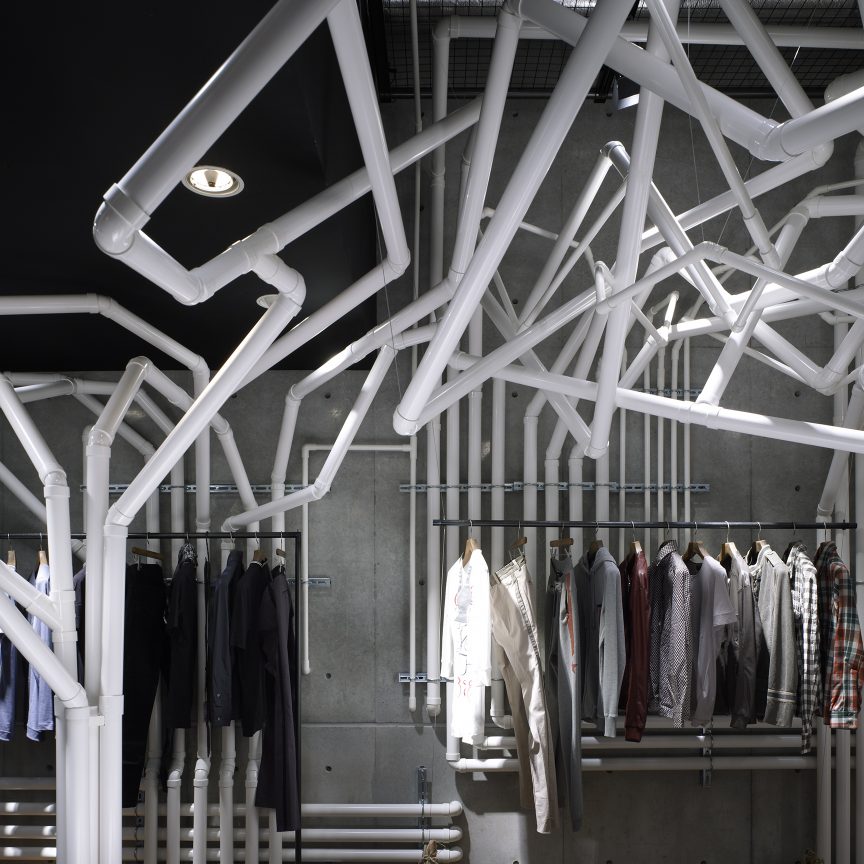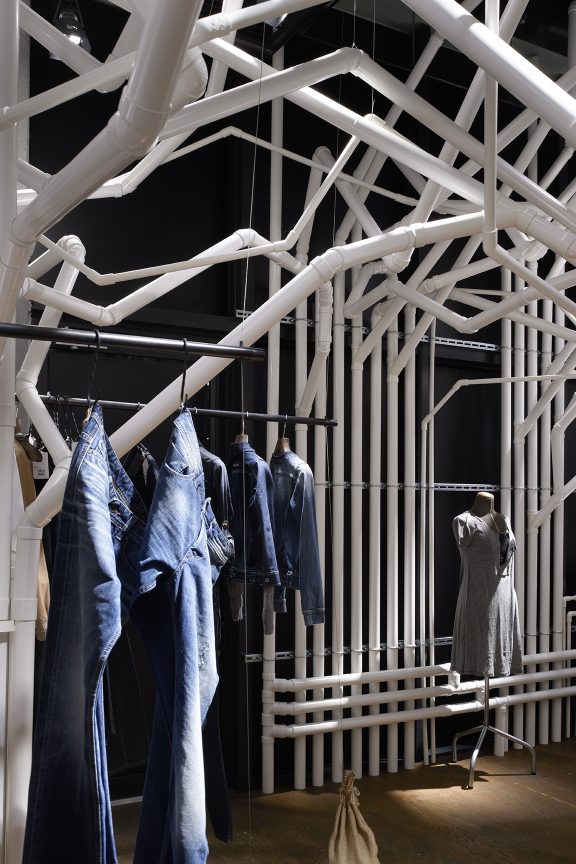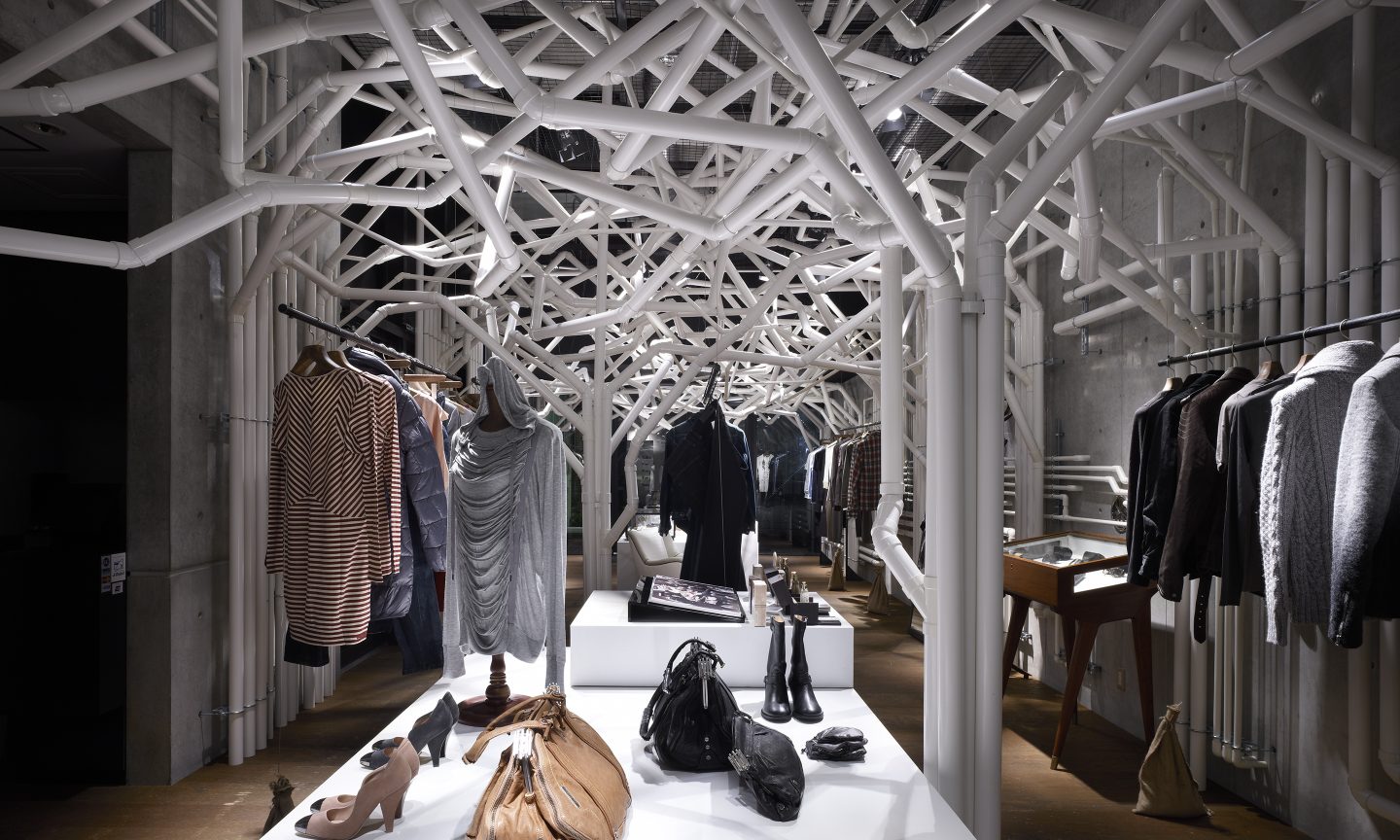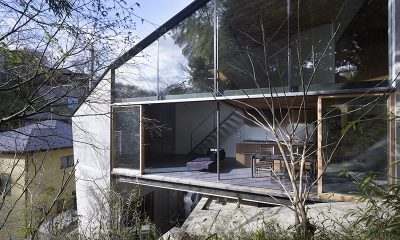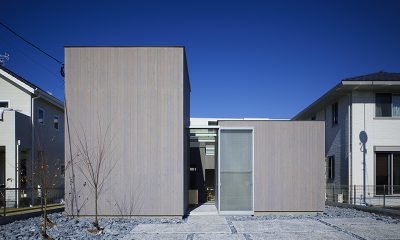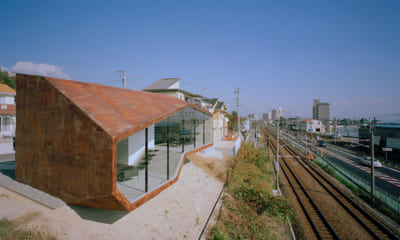Organic and synthetic live together
A temporary installation for the apparel retailer Diesel’s Aoyama, Tokyo flagship. Unlike most, this installation had the specific and narrow directive to be both viewable as a work of art in its own right, and simultaneously incorporate the shop’s regular operation.
We were guided by our interest in the period in which jeans, Diesel’s showcase product, came into being, and motivated to create a space revealing the way the values of an era can be reflected in the changing value of its products.Jeans were originally work clothing, and as such, went largely unseen. When, all at once, they were determined to represent the height of fashion, they were immediately viewed differently through the eyes of society. We chose to use PVC plumbing pipes for the “Nature Factory” to attempt a similar act of visually altering consciousness. Numerous pipes climb the walls in arrangements characteristic of their typical use and appearance; they rise until they plunge inward, converge, and descend in a pattern reminiscent of a mangrove forest consuming the entire space.
It was cultivated in exactly the manner of a natural object, over time. The shade it provides is exactly like that in nature, but produced by artificially fabricated limbs pervading the space. Organic and synthetic live together here, forming between them a new sort of chemistry.
In the same way, commerce and art come to live together, as light darts through the limbs casting shadows across the fixtures, and illuminating the merchandise displayed amid the installation. If there is a message here that we wish to convey to society, it is that within genres and materials as disparate as plumbing and fashion, diversity is evenly met by common purpose.
This installation makes a gallery of a shop, and contains the shop within itself. Over a period of about six months, merchandise was displayed upon the installation’s limbs, formed of standard plumbing PVC pipe. Such pipes are normally only viewed in parallel and right angle configurations. When connected at freely selected angles they resemble outstretched tree branches, and the shop takes on the appearance of an arbor.
